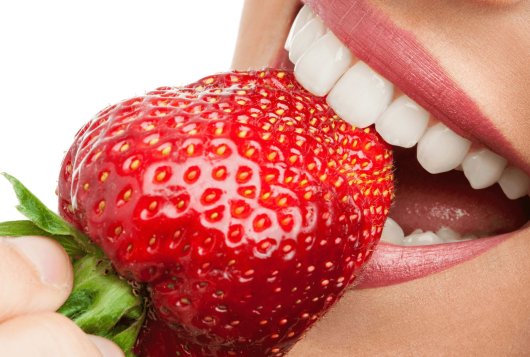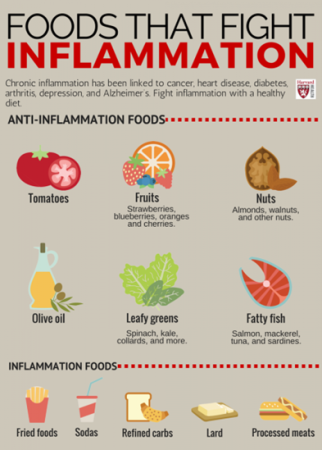
Longread
Healthy fruits and vegetables
Fruits and vegetables contain numerous important nutrients for humans. Proper post-harvest handling and logistics contribute to the availability of good quality fruits and vegetables. The importance of fruits and vegetables as part of a healthy diet is repeatedly confirmed in scientific studies. There is compelling evidence that increasing fruit and vegetable consumption leads to lower blood pressure and a lower risk of cardiovascular disease and stroke. Relationships with other diseases are also increasingly being established.
Moreover, it is remarkable to find such a role for fruits and vegetables. This is because the difficulty with most of these types of studies, epidemiological research, is that links are made between large groups of people and their diets. Those people are all different: male-female, young-old, culture, DNA, lifestyle. And even when you talk about "fruits and vegetables," you're talking about dozens of different products with different nutritional values. That, despite all these factors, a link is found with certain diseases means that the effect of fruits and vegetables may be much greater than we currently think. Of course, research is also taking place to get a better handle on those effects. This involves looking at specific substances and the effect on physiological processes.
Consumption of vegetables and fruit
The National Institute for Public Health and the Environment in the Netherlands (RIVM) regularly measures how much fruit and vegetables Dutch people eat through so-called food consumption surveys (VCP). Information about this can be found on the RIVM website [1]. Looking at the guidelines of the Dutch Nutrition Centre (Voedingscentrum) (250 g vegetables and 200 g fruit/day) or the Health Council (at least 200 g vegetables and 200 g fruit/day) the Dutch eat too little vegetables and fruit.
Until 2010, a declining trend in vegetable consumption was even found (average consumption 128 g/person/day). The 2016 VCP showed a stabilization (135 g/person/day). The latest VCP, from 2021, even shows an increase to 162 g/person/day. A note here is that the 2021 measurements are from during the Corona period, and purchase figures in 2022 and 2023 show a decline again [2, 3].
The figures for fruit consumption are slightly different. Until 2010, a declining trend was also found (103 g/person/day on average). However, the 2016 VCP showed a slight increase (117 g/person/day). In the latest VCP, from 2021, it rises slightly to 129 g/person/day.
Nutritional value of vegetables and fruit
Fruits and vegetables are an important source of fiber. They are high in water and relatively low in salt, fat and calories. Fruits and vegetables are also good sources of micronutrients, such as vitamins and minerals.
In addition, they contain secondary plant metabolites, also known as constituents. The term "constituents" is a collective term for a variety of plant metabolites in fruits and vegetables. A distinction is often made between primary and secondary plant metabolites. Both have an impact on consumer health. Primary plant metabolites are substances that the plant needs directly for photosynthesis, respiration, growth and development. For example, the amino acids from which proteins are built, carbohydrates resulting from photosynthesis, fats, vitamins and most minerals. Secondary plant metabolites include substances involved in plant defense, such as protection against high or low temperature, foraging or disease-causing microorganisms [4]. They also include color, odor or flavor compounds.
Variation in the nutritional value of vegetables and fruit
It is therefore important to eat enough vegetables and fruits, especially for all the beneficial substances they provide. At the same time, we know that the amount of these substances can vary greatly. The most important factor is the type of vegetable or fruit, but cultivars can also vary greatly from one another. An example is lycopene, which can be found in large quantities in tomatoes, but only in the red variety and not in the yellow variety. Other factors that can affect the amount of contents are:
- The growing conditions under which vegetables and fruits grow.
- The cultivation methods used: do the vegetables and fruits grow in the greenhouse where you can control the growing conditions well, or do they grow in the open ground, where the growing conditions are less controlled. There can also be a difference between organically or conventionally grown fruits and vegetables.
- The climate: is it a dry or just wet year; is it a hot or just cold year; and the season in which harvesting takes place.
- The conditions after harvest, such as during storage, transport and packaging. A decrease in vitamin C has been found with prolonged storage [5]. Storage in blue light rather than dark can actually increase the amount of vitamin C in strawberries [6].
- Further processing and processing methods used.
Is the nutritional value declining or not?
It is regularly reported that the nutritional value in fruits and vegetables is declining. For example, in 2020 there was an article claiming that the nutritional value of fruits and vegetables had declined as much as 50% [7]. However, the reality is more nuanced. There have been only a few studies examining changes in nutritional value over several years. Mayer analyzed 20 types of fruits and vegetables in the UK, comparing the 1930s to the 1980s [8]. He found a decrease in some minerals, which, notably, do not change after harvest. He also noted that the products in the 1980s contained more water (a dilution effect) and that varieties, cultivation methods, and measurement techniques were different. A similar study in the US by Davis [9] compared 43 crops between 1950 and 1999. He observed a reduction in several minerals, as well as in vitamin C and B2. However, this study also used different varieties and measurement methods, and the variation in nutritional value in 1950 was found to be very high (indicating greater measurement inaccuracies). Another study examining the influence of soil [10] could not confirm a decrease in nutritional value.
In summary, there are too few studies to conclusively state that the nutritional value of fruits and vegetables is consistently declining. In other words, we don't know for sure. A long-term study would be advisable, but it is very costly. For now, the variation between different types of vegetables and cultivars seems to be a much larger source of variability. Along with eating enough fruits and vegetables, varying your intake of these is also recommended. The Nutrition Centre [Voedingscentrum] has reached the same conclusion [11].
The health benefits of vegetables and fruits
Consuming sufficient fruits and vegetables affects human health both in the short and long term. Eating fruits and vegetables lowers the risk of coronary heart diseases and stroke. In available intervention studies, both fruits and vegetables are varied, so separate effects of fruits and vegetables cannot be determined [12]. The combined consumption of fruits and vegetables lowers systolic blood pressure. Cohort studies have found a link between vegetable consumption and a reduced risk of coronary heart diseases and stroke. Furthermore, these studies indicate that eating vegetables lowers the risk of colorectal cancer, while consuming green leafy vegetables reduces the chances of developing type 2 diabetes and lung cancer. There is also a potential link between high intake of green leafy vegetables and a lower risk of stroke [13].
Increasing evidence suggests that certain secondary compounds in fruits and vegetables are beneficial for human health and play a role in combating chronic inflammation [14]. Chronic inflammation is increasingly being linked to the development of lifestyle diseases. Our diet influences chronic inflammation, and thereby these lifestyle diseases, with fruits and vegetables playing a positive role [15].

Nutrition and health claims
Important vitamins and minerals in fruits and vegetables are vitamin B1 (thiamine), vitamin B11 (folic acid), vitamin C (ascorbic acid), vitamin E (alpha-tocopherol), vitamin K, beta-carotene (which can be converted to vitamin A in the body), iron, magnesium and selenium [16].
Claims about health benefits are not yet allowed on fruits and vegetables, but nutrition claims may be of interest to the horticultural sector. Possible nutrition claims are "source of ...." and "rich in ...." [16]. In late 2014, the Plant Knowledge Center commissioned a scan around nutritional claims, of the 29 nutritional claims allowed, 13 were found to be of interest to breeders, growers and other horticultural companies. Of the 27 nutrition claims allowed around vitamins and minerals, 16 were potentially of interest to vegetables [17].
Conclusion
Eating enough fruits and vegetables is important for health. There is an increasingly strong link between eating fruits and vegetables and the prevention of various diseases of affluence. This is due in part to a variety of substances in fruits and vegetables; the nutritional value. All kinds of pre-harvest measures affect nutritional value. Only a few studies have found an influence of post-harvest conditions on nutritional value, especially vitamin C. There does not seem to be any evidence that post-harvest conditions negatively affect nutritional value. The main reason to ensure good postharvest conditions is to be able to provide fruits and vegetables in good quality, attractive enough to eat and thus contribute to health.
If you want to learn more about the effect of cultivation and storage practices on the nutritional value of crops, you can visit the wiki of Groen Kennisnet [18].
Referenties
1. RIVM. Wat eet Nederland?
2. Circana/GFH, Groente stijgt in omzet maar daalt in volume; Fruit daalt in omzet licht door vers fruit. 2023.
3. NFO. Consumptie van fruit daalde in 2022. 2023.
4. Crozier, A., D. Del Rio, and M.N. Clifford, Bioavailability of dietary flavonoids and phenolic compounds. Molecular Aspects of Medicine, 2010. 31(6): p. 446-467.
5. Lee, S.K. and A.A. Kader, Preharvest and postharvest factors influencing vitamin C content of horticultural crops. Postharvest Biology and Technology, 2000. 20(3): p. 207-220.
6. Xu, F., et al., Effect of blue light treatment on fruit quality, antioxidant enzymes and radical-scavenging activity in strawberry fruit. Scientia Horticulturae, 2014. 175: p. 181–186.
7. The Observer. Red meat plays vital role in diets, claims expert in fightback against veganism. 2020.
8. Mayer, A.M., Historical changes in the mineral content of fruits and vegetables. British Food Journal, 1997. 99(6): p. 207-211.
9. Davis, D.R., M.D. Epp, and H.D. Riordan, Changes in USDA Food Composition Data for 43 Garden Crops, 1950 to 1999. J Am Coll Nutr, 2004. 23(6): p. 669-682.
10. Rietra, R.P.J.J., Achteruitgang van nutriëntengehalten in voedselgewassen door een verminderde bodemkwaliteit? 2007, Alterra. p. 1-48.
11. Voedingscentrum. Bevatten groenten tegenwoordig minder voedingsstoffen dan vroeger?
12. Voedingscentrum. Factsheet fruit. 2018.
13. Voedingscentrum. Factsheet groente. 2018.
14. Hosseini, B., et al., Effects of fruit and vegetable consumption on inflammatory biomarkers and immune cell populations: a systematic literature review and meta-analysis. Am J Clin Nutr, 2018. 108(1): p. 136-155.
15. Harvard Medical School. Foods that fight inflammation. 2021 16-11-2021.
16. Peppelenbos, H., Groene Gezondheid. Van bittere noodzaak tot prachtige kansen. Inaugurele rede. 2020.
17. Verzijden, K. Use of nutrition claims in horticultural business. 2014.
18. Groen Kennisnet. Effects of cultivation practices on the nutritional value of crops. 2019.